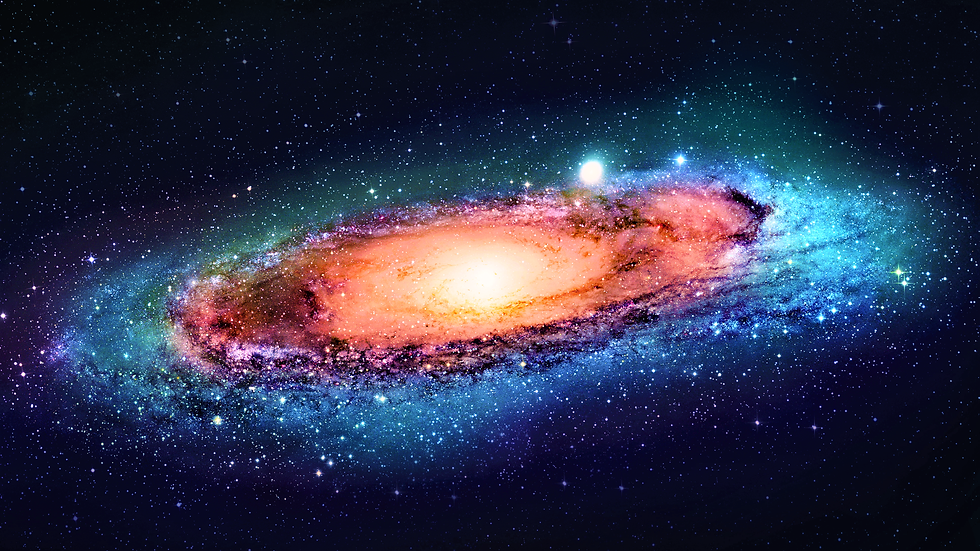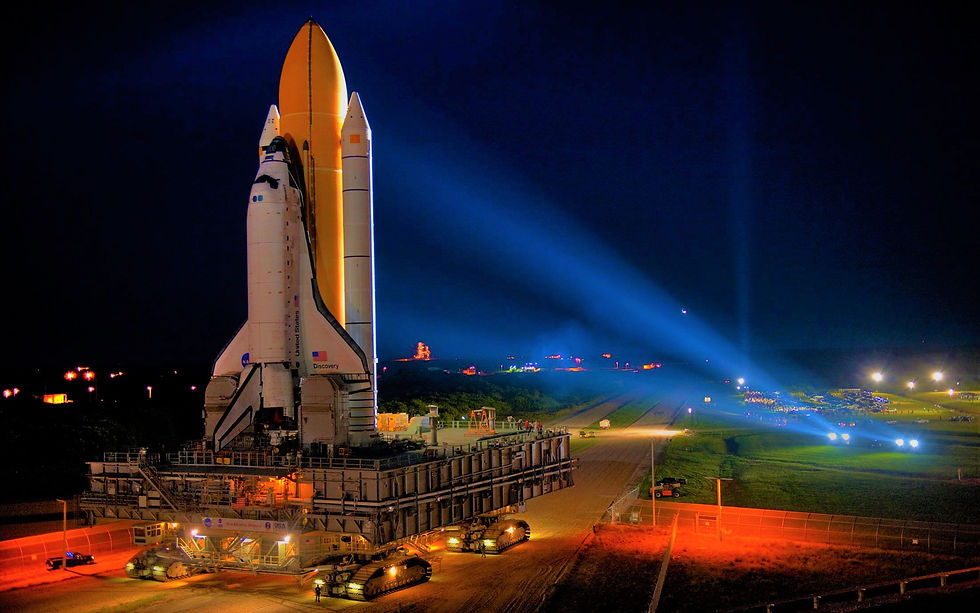Orbital Science
- pilot55kassas55
- 19 يوليو 2022
- 4 دقيقة قراءة
In celestial mechanics, an orbit is the curved trajectory of an object, such as the trajectory of a planet around a star, or of a natural satellite around a planet, or of an artificial satellite around an object or position in space such as a planet, moon, asteroid, or Lagrange point. Normally, orbit refers to a regularly repeating trajectory, although it may also refer to a non-repeating trajectory. To a close approximation, planets and satellites follow elliptic orbits, with the center of mass being orbited at a focal point of the ellipse, as described by Kepler's laws of planetary motion.
For most situations, orbital motion is adequately approximated by Newtonian mechanics, which explains gravity as a force obeying an inverse-square law. However, Albert Einstein's general theory of relativity, which accounts for gravity as due to curvature of spacetime, with orbits following geodesics, provides a more accurate calculation and understanding of the exact mechanics of orbital motion.
Planetary Orbits
Within a planetary system, planets, dwarf planets, asteroids and other minor planets, comets, and space debris orbit the system's barycenter in elliptical orbits. A comet in a parabolic or hyperbolic orbit about a barycenter is not gravitationally bound to the star and therefore is not considered part of the star's planetary system. Bodies that are gravitationally bound to one of the planets in a planetary system, either natural or artificial satellites, follow orbits about a barycenter near or within that planet.
Owing to mutual gravitational perturbations, the eccentricities of the planetary orbits vary over time. Mercury, the smallest planet in the Solar System, has the most eccentric orbit. At the present epoch, Mars has the next largest eccentricity while the smallest orbital eccentricities are seen with Venus and Neptune.
As two objects orbit each other, the periapsis is that point at which the two objects are closest to each other and the apoapsis is that point at which they are the farthest. (More specific terms are used for specific bodies. For example, perigee and apogee are the lowest and highest parts of an orbit around Earth, while perihelion and aphelion are the closest and farthest points of an orbit around the Sun.)
In the case of planets orbiting a star, the mass of the star and all its satellites are calculated to be at a single point called the barycenter. The paths of all the star's satellites are elliptical orbits about that barycenter. Each satellite in that system will have its own elliptical orbit with the barycenter at one focal point of that ellipse. At any point along its orbit, any satellite will have a certain value of kinetic and potential energy with respect to the barycenter, and the sum of those two energies is a constant value at every point along its orbit. As a result, as a planet approaches periapsis, the planet will increase in speed as its potential energy decreases; as a planet approaches apoapsis, its velocity will decrease as its potential energy increases.

Understanding Orbits
There are a few common ways of understanding orbits:
A force, such as gravity, pulls an object into a curved path as it attempts to fly off in a straight line.
As the object is pulled toward the massive body, it falls toward that body. However, if it has enough tangential velocity it will not fall into the body but will instead continue to follow the curved trajectory caused by that body indefinitely. The object is then said to be orbiting the body.
As an illustration of an orbit around a planet, the Newton's cannonball model may prove useful (see image below). This is a 'thought experiment', in which a cannon on top of a tall mountain is able to fire a cannonball horizontally at any chosen muzzle speed. The effects of air friction on the cannonball are ignored (or perhaps the mountain is high enough that the cannon is above the Earth's atmosphere, which is the same thing).
If the cannon fires its ball with a low initial speed, the trajectory of the ball curves downward and hits the ground (A). As the firing speed is increased, the cannonball hits the ground farther (B) away from the cannon, because while the ball is still falling towards the ground, the ground is increasingly curving away from it (see first point, above). All these motions are actually "orbits" in a technical sense—they are describing a portion of an elliptical path around the center of gravity—but the orbits are interrupted by striking the Earth.
If the cannonball is fired with sufficient speed, the ground curves away from the ball at least as much as the ball falls—so the ball never strikes the ground. It is now in what could be called a non-interrupted or circumnavigating, orbit. For any specific combination of height above the center of gravity and mass of the planet, there is one specific firing speed (unaffected by the mass of the ball, which is assumed to be very small relative to the Earth's mass) that produces a circular orbit, as shown in (C).
As the firing speed is increased beyond this, non-interrupted elliptic orbits are produced; one is shown in (D). If the initial firing is above the surface of the Earth as shown, there will also be non-interrupted elliptical orbits at slower firing speed; these will come closest to the Earth at the point half an orbit beyond, and directly opposite the firing point, below the circular orbit.
At a specific horizontal firing speed called escape velocity, dependent on the mass of the planet and the distance of the object from the barycenter, an open orbit (E) is achieved that has a parabolic path. At even greater speeds the object will follow a range of hyperbolic trajectories. In a practical sense, both of these trajectory types mean the object is "breaking free" of the planet's gravity, and "going off into space" never to return.





تعليقات